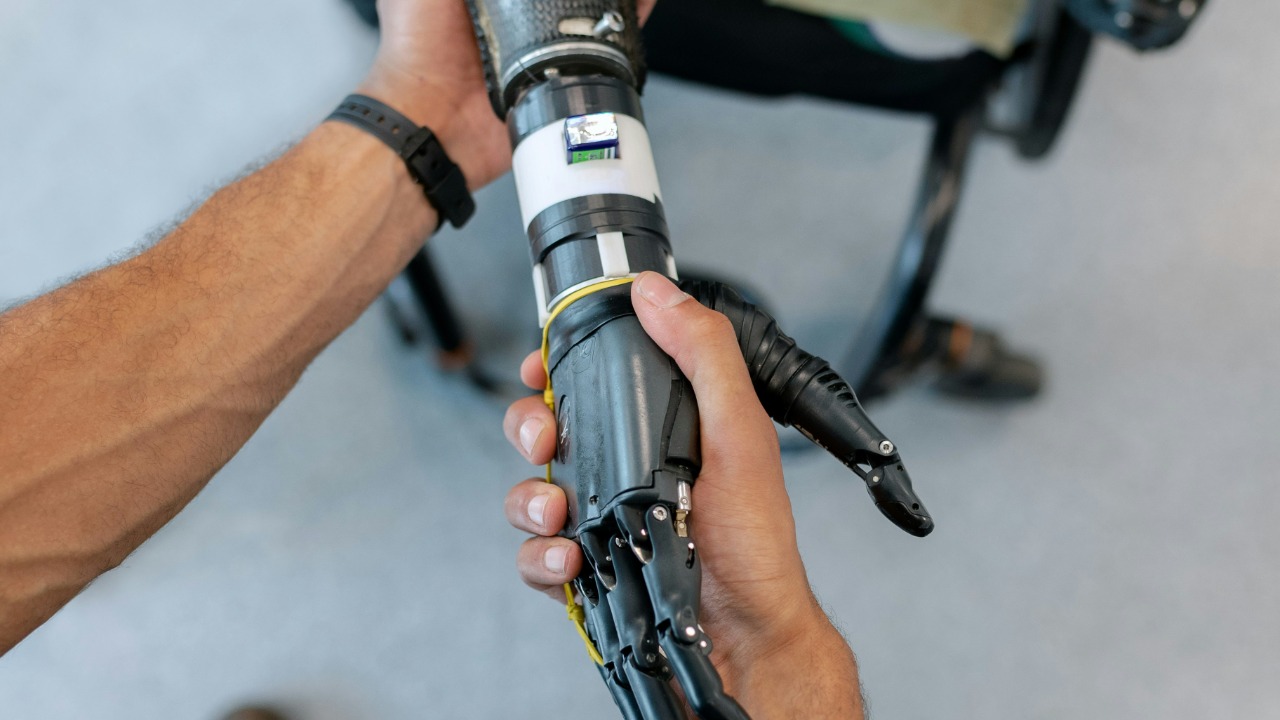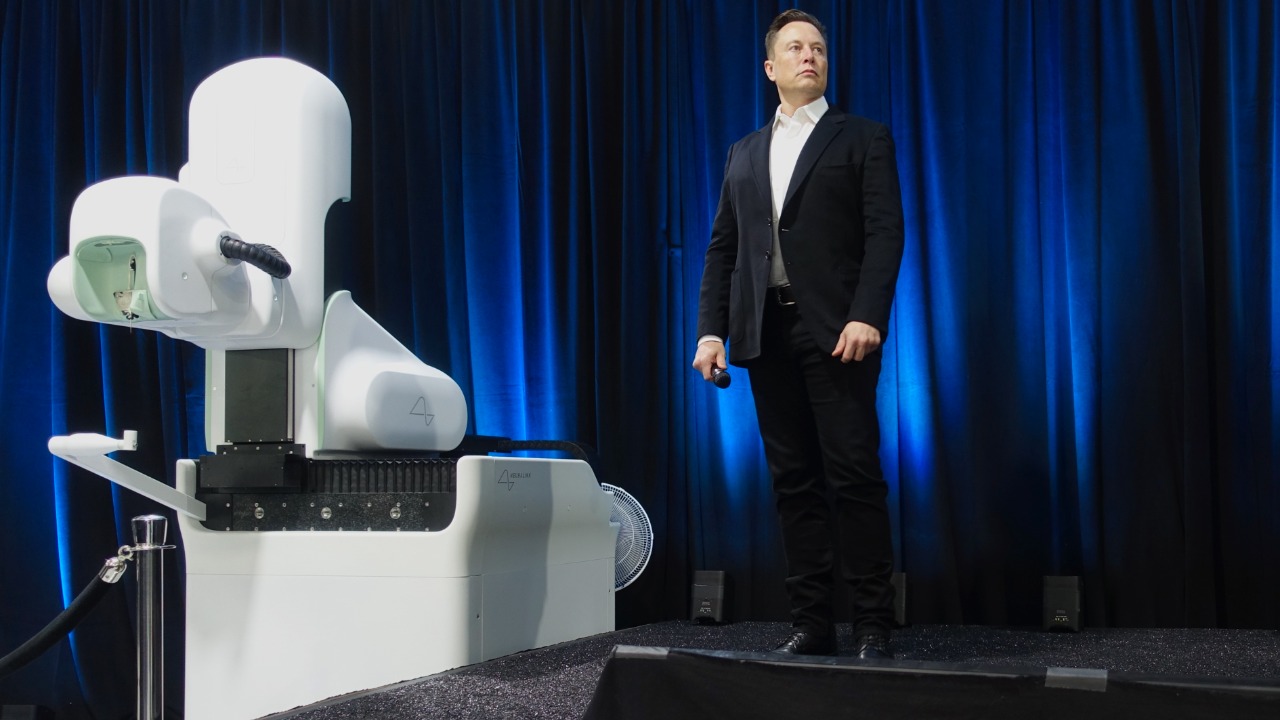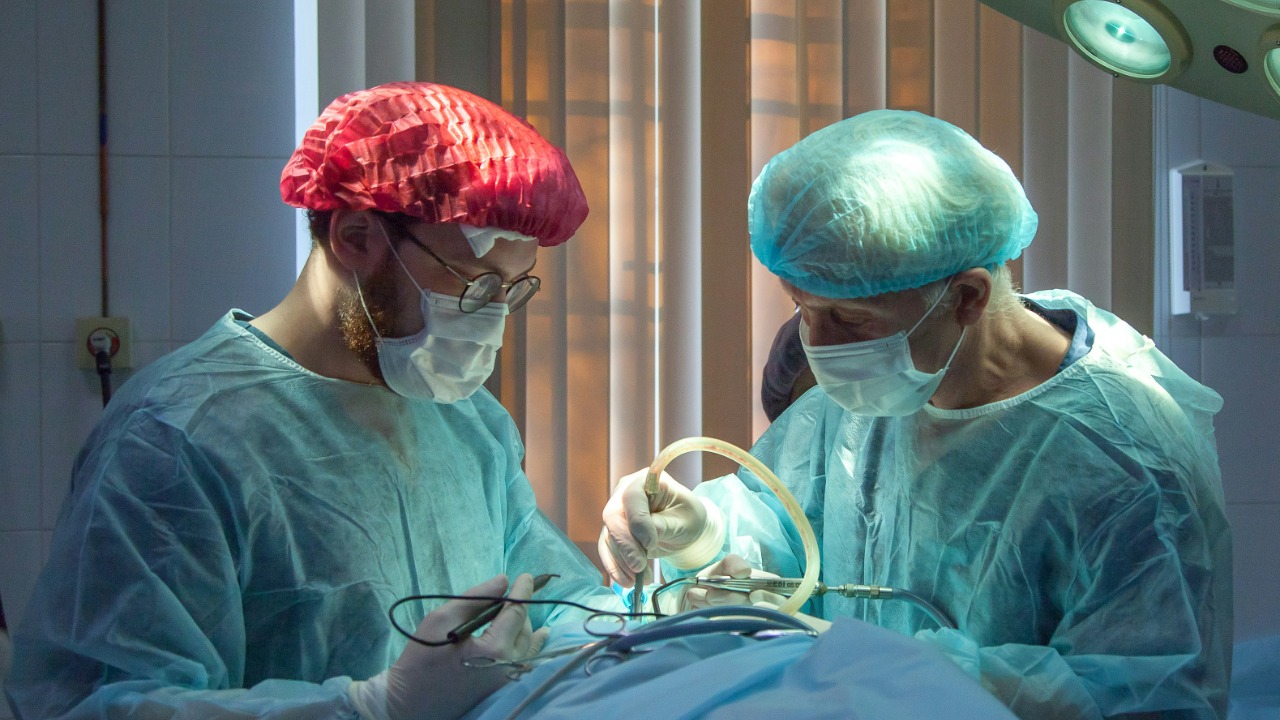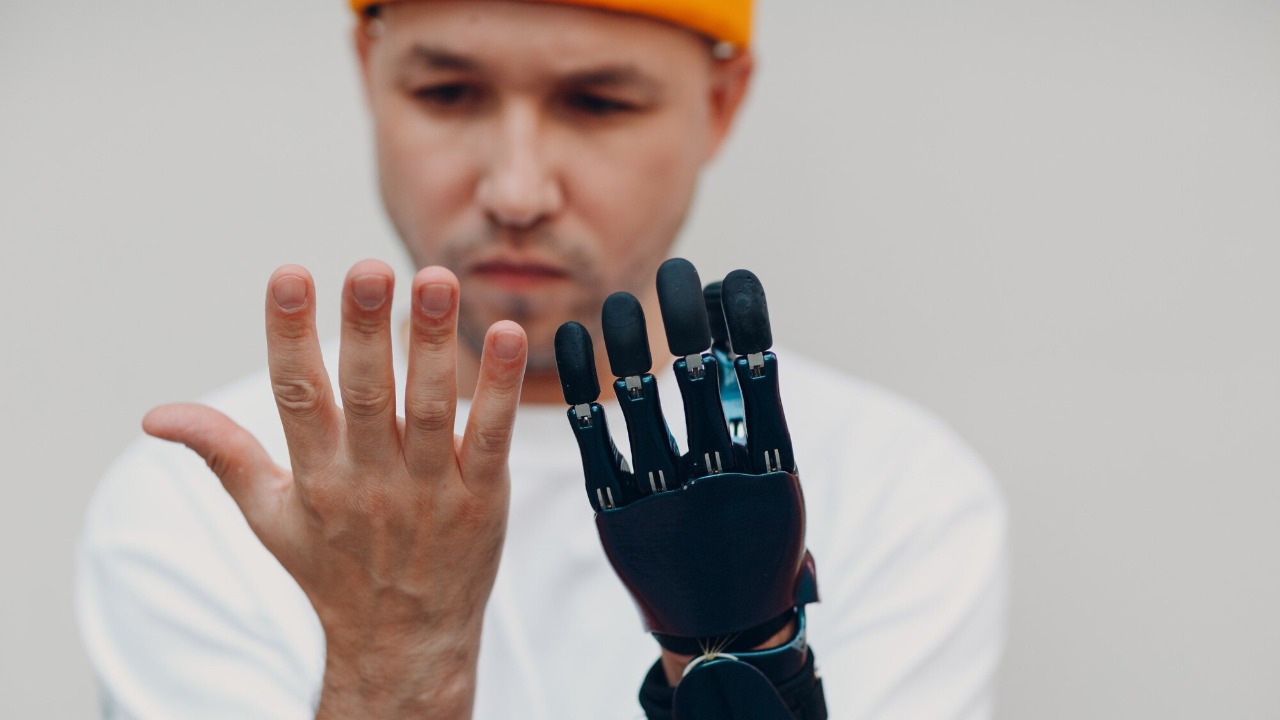
Neuralink’s first human patient, implanted with the company’s brain-computer interface, has achieved the ability to control a computer mouse solely through thoughts, as announced by Elon Musk on February 20, 2024. This breakthrough extends to the patient maneuvering a robot arm with mental commands, marking a significant advancement in neural technology. The development, detailed in recent reports, highlights Neuralink’s progress toward restoring autonomy for individuals with mobility impairments.
Neuralink’s Brain-Computer Interface Explained

The Neuralink device is a sophisticated piece of technology, consisting of a coin-sized implant equipped with 1,024 electrodes. These electrodes are threaded into the brain to detect neural signals, facilitating direct interaction with computers. This intricate setup allows the device to interpret brain activity and translate it into actionable commands, such as moving a computer cursor. The implantation process is performed by a robotic surgeon, which inserts ultra-fine flexible threads to minimize tissue damage while enabling high-resolution brain activity recording. This precision is crucial for maintaining the integrity of brain tissue and ensuring the device’s effectiveness [source].
Once implanted, the system translates detected thoughts into cursor movements on a screen. This capability allows the user to achieve speeds comparable to able-bodied individuals after an initial calibration period. The technology’s ability to match the performance of traditional input devices underscores its potential to revolutionize how individuals with mobility impairments interact with digital environments. The implications for enhancing quality of life and independence for these individuals are profound, as it opens up new avenues for communication and interaction [source].
The Patient’s Implantation and Initial Trials

The first human recipient of Neuralink’s brain-computer interface underwent surgery in January 2024 at a facility in California. The procedure was completed without any reported complications, marking a successful start to this groundbreaking trial. Following the implantation, the patient began controlling a mouse cursor within days, demonstrating the rapid adaptation and effectiveness of the technology. By mid-February 2024, the patient had progressed to playing video games like chess using thought alone, showcasing the interface’s potential for complex interactions [source].
Elon Musk emphasized the significance of this achievement, stating that the patient “can control the mouse just by thinking.” This rapid adaptation phase highlights the interface’s intuitive design and its potential to seamlessly integrate with the user’s natural cognitive processes. The ability to control digital interfaces through thought alone represents a paradigm shift in assistive technology, offering new possibilities for individuals with severe physical limitations [source].
Expanding to Robotic Control

Building on the success of mouse control, the patient demonstrated the ability to operate a robotic arm using thought-based commands. This advancement was showcased in a Neuralink update, where the patient performed tasks like grasping objects with the robotic arm. The interface decodes motor intentions from the brain’s cortex, allowing precise robot movements without physical input. The latency of these actions is under 200 milliseconds, ensuring a responsive and fluid interaction between the user and the robotic device [source].
This robotic capability was verified through live demonstrations, where the patient successfully navigated the arm to specific targets using imagined hand motions. The ability to control a robotic arm with such precision and speed underscores the potential of Neuralink’s technology to restore physical capabilities to individuals with paralysis or severe motor impairments. This development not only enhances the user’s autonomy but also paves the way for future applications in rehabilitation and assistive robotics [source].
Future Applications and Challenges

Neuralink’s vision extends beyond restoring basic digital and physical control to paralyzed individuals. The company aims to enable users to regain comprehensive autonomy through wireless upgrades and expanded electrode arrays in upcoming trials. These advancements could significantly enhance the interface’s functionality and user experience, making it more accessible and practical for everyday use. However, the journey toward widespread adoption is not without challenges. Long-term biocompatibility of the implants remains a critical concern, as does the ethical issue of data privacy from brain signal recordings [source].
Elon Musk envisions broader applications for Neuralink’s technology, including the treatment of neurological disorders beyond mobility impairments. The company’s efforts received a significant boost with the FDA’s approval for human trials granted in May 2023. This regulatory milestone opens the door for further exploration of the technology’s potential in medical and therapeutic contexts. As Neuralink continues to push the boundaries of brain-computer interfaces, the implications for healthcare, rehabilitation, and human-machine interaction are vast and transformative [source].